
What is the difference between Having clause and Where clause? YouTube
Example. SELECT Employees.LastName, COUNT(Orders.OrderID) AS NumberOfOrders. FROM (Orders. INNER JOIN Employees ON Orders.EmployeeID = Employees.EmployeeID) GROUP BY LastName. HAVING COUNT(Orders.OrderID) > 10; Try it Yourself ». The following SQL statement lists if the employees "Davolio" or "Fuller" have registered more than 25 orders:
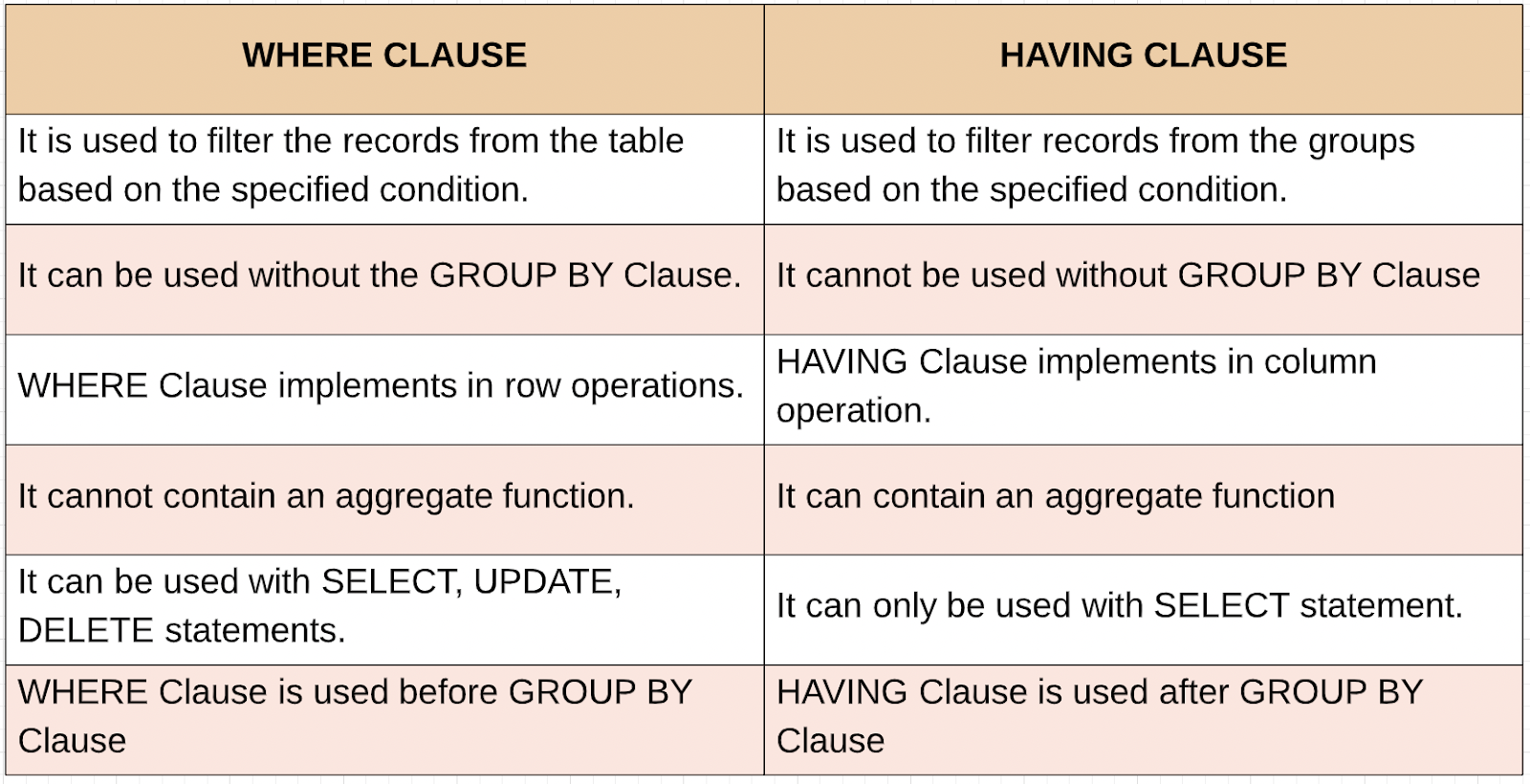
SQL Interview Questions Coding Ninjas CodeStudio
The key difference between the WHERE and HAVING clauses in SQL lies in their application within a query. The WHERE clause is primarily used to filter individual rows from a dataset based on specified conditions, making it a crucial tool for row-level filtering. On the other hand, the HAVING clause operates exclusively in conjunction with the.
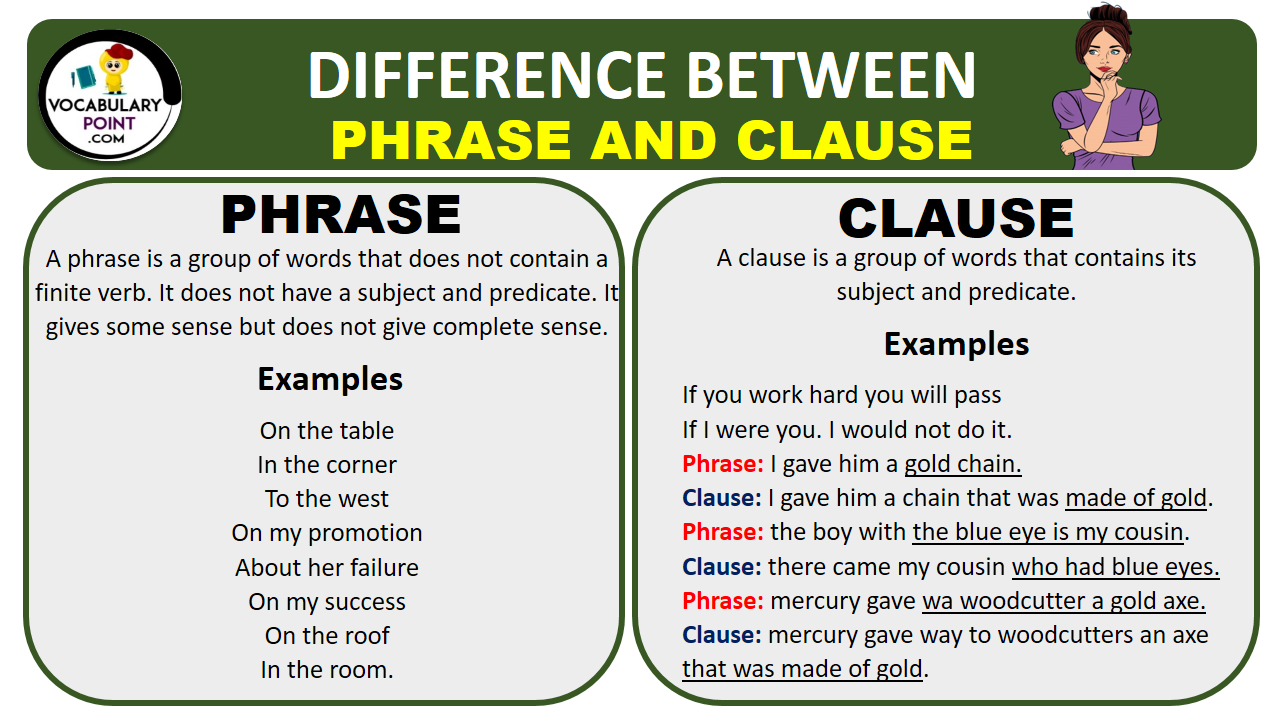
DIFFERENCE BETWEEN PHRASE AND CLAUSE WITH EXAMPLES Vocabulary Point
The HAVING clause specifies the condition or conditions for a group or an aggregation. The employee table below helps us analyze the HAVING clause. It contains employee IDs (the emp_id column), the department where that employee works, and the employee's salary. To calculate the sum of salaries for each department, you'd write this query:
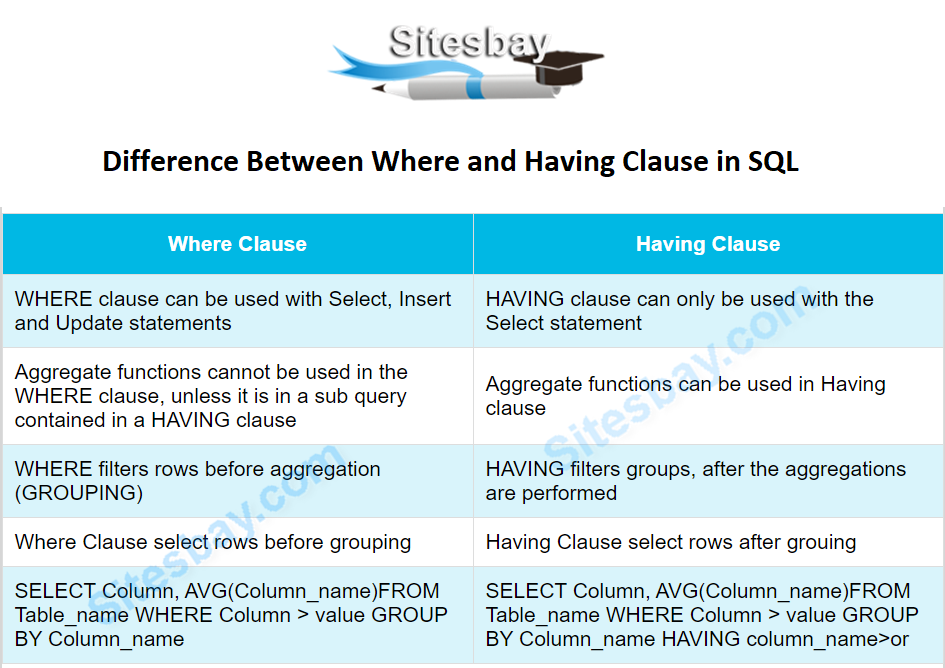
Having Sql
Difference between Where and Having Clause in SQL Read Courses 1. WHERE Clause: WHERE Clause is used to filter the records from the table or used while joining more than one table.Only those records will be extracted who are satisfying the specified condition in WHERE clause. It can be used with SELECT, UPDATE, DELETE statements.

What is the difference between Having clause and Where clause? YouTube
If you use a HAVING clause without a GROUP BY clause, the HAVING clause behaves like the WHERE clause. The following illustrates the syntax of the HAVING clause: SELECT column1, column2, AGGREGATE_FUNCTION (column3) FROM table1 GROUP BY column1, column2 HAVING group_condition; Code language: SQL (Structured Query Language) (sql)

The Difference Between a Phrase and a Clause Individual Whiteboard Lesson 8th grade writing
HAVING clause allows a condition to use a selected (!) column, alias or an aggregate function. This is because WHERE clause filters data before select, but HAVING clause filters resulting data after select. So put the conditions in WHERE clause will be more efficient if you have many many rows in a table.

Difference between WHERE clause and HAVING clause in MySQL by Sagar Jaybhay Medium
If "Where" clause is used to filter the records from a table that is based on a specified condition, then the "Having" clause is used to filter the record from the groups based on the specified condition.

Difference Between Having And Where Clause
How do Where and Having Differ? When working with more advanced SQL it can be unclear when it makes sense to use a SQL WHERE versus a HAVING clause. Though it appears that both clauses do the same thing, they do it in different ways. In fact, their functions complement each other. A WHERE clause is used is filter records from a result.

HAVING Clause in SQL, Difference between HAVING & WHERE clause YouTube
SQL: What's the difference between HAVING and WHERE? i am learning sql syntax and i can't understand this. the second half of the question is a much more technical one. what is actually happening behind the scenes of the database between WHERE and HAVING? which one uses more resources? are they same algorithm just applying to different data sets?

GROUP BY AND HAVING CLAUSE IN SQL DIFFERENCE BETWEEN GROUP BY AND HAVING CLAUSE IN SQL YouTube
1. Overview of Having and Where Clause 2. Explanation of SQL queries 3. Importance of having and where clauses in SQL queries 4. Where Clause 5. Having Clause 6. Difference between Having and Where Clause 6.1. Reference website Overview of Having and Where Clause

what is the difference between where and having clause sql interview question and answer YouTube
Execution. WHERE clause is processed right after FROM clause in the logical order of query processing, which means it is processed before GROUP BY. HAVING clause is executed after groups are created. Implementation. WHERE clause implements in row operations. HAVING clause implements in column operation.
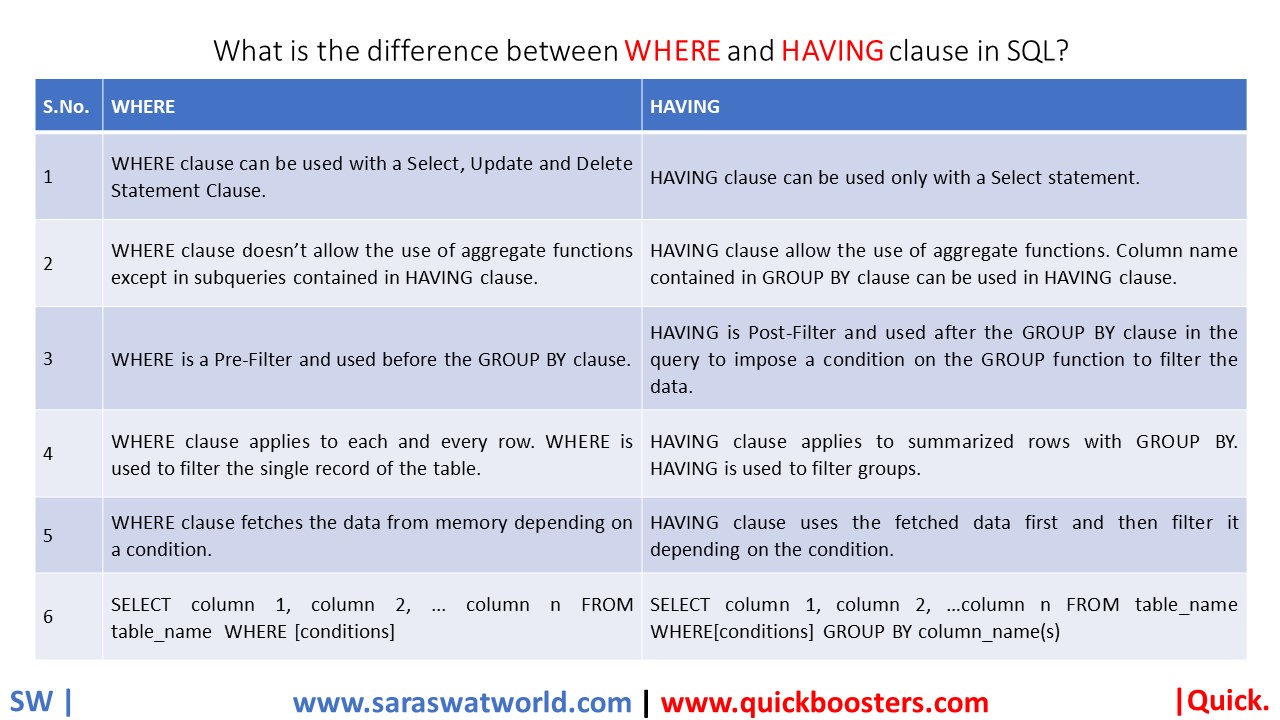
WHAT IS THE DIFFERENCE BETWEEN WHERE AND HAVING CLAUSE IN SQL QuickBoosters
The main difference between them is that the WHERE clause is used to specify a condition for filtering records before any groupings are made, while the HAVING clause is used to specify a condition for filtering values from a group. Before making the comparison, we will first know these SQL clauses. WHERE Clause

Idiom Phrase Order Online, Save 65 jlcatj.gob.mx
Logical Process Flow for Queries With WHERE and HAVING The order in which you write an SQL query differs from the order of execution. Let's look at the following as an example: SELECT country_id, city, MIN(salary), MAX(salary) FROM hr.emp_details_view WHERE country_id IN ('US', 'UK') GROUP BY country_id, city HAVING MIN(salary) < 15000

What Is The Difference Between A Work Permit And Permanent Residency Gambaran
48 The line you quote isn't the key bit at all. The key bit, as wcm pointed out, is that HAVING is a post-aggregation filter, whereas WHERE is a pre-aggregation filter. - Nick Chammas Jan 25, 2012 at 19:23 1
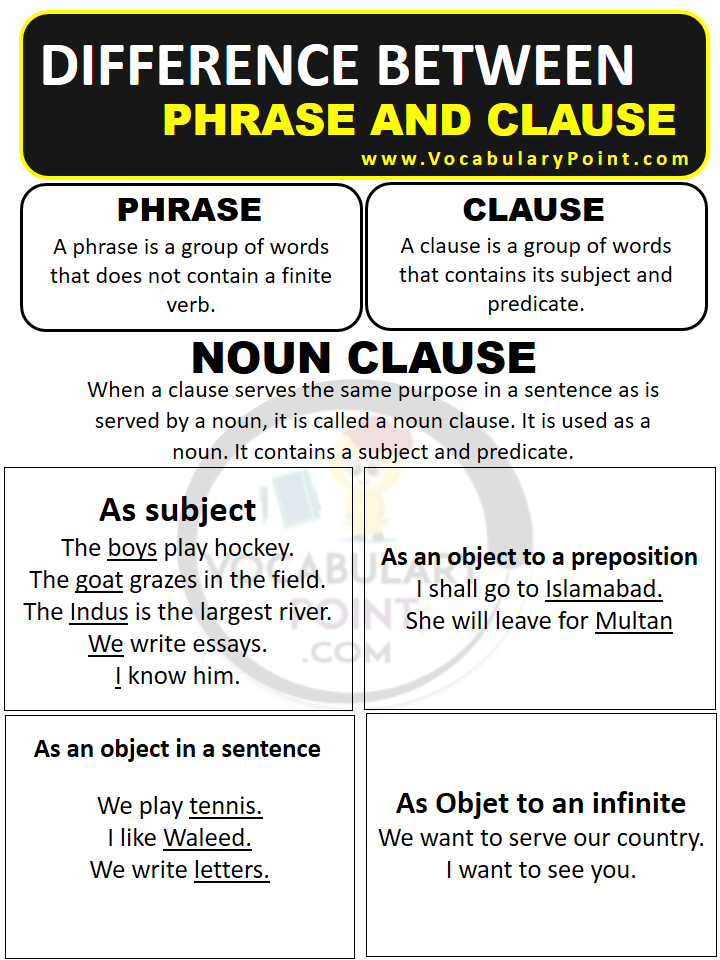
DIFFERENCE BETWEEN PHRASE AND CLAUSE WITH EXAMPLES Vocabulary Point
Difference Between Where and Having Clause in SQL MySQL Database Big Data Analytics In this post, we will understand the difference between WHERE clause and HAVING clause in SQL. WHERE Clause It is used to filter the records from the table based on a specific condition. It can be used without the 'GROUP BY' clause.

Difference Between Phrase and Clause with examples GrammarVocab
The difference between WHERE and HAVING clauses are: The WHERE clause is used to filter rows before the grouping is performed. The HAVING clause is used to filter rows after the grouping is performed. It often includes the result of aggregate functions and is used with GROUP BY. Let's take a look at the WHERE and HAVING clauses in more detail.